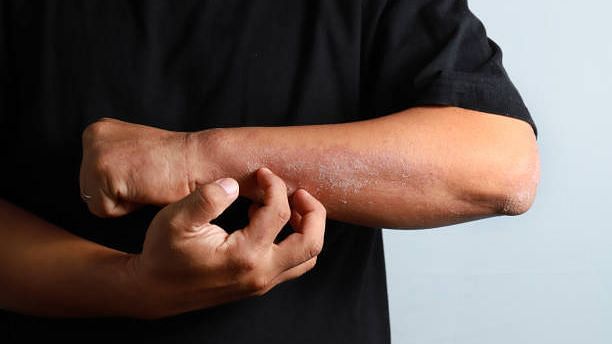Alarmingly over the course of years, Indian researchers have estimated that only 40 percent of Atopic Dermatitis (AD) cases are diagnosed, while the rest remain shockingly undiagnosed or are taken lightly as general rashes or mild eczema.
AD is amongst the most prevalent skin disorder seen in children, with 15 to 20 percent affecting paediatric population worldwide and around 7 percent in India.
Although the percentage is much less than Europe (22 precent), Scandinavian countries (27 percent) or USA (25 precent), considering the fact that India has got the highest number of younger populations in the world, the total number of children suffering from AD far outnumber any other countries in the world.
It is surprising to note that an inflammatory skin disease that can also be extremely agonizing is still under recognized in India and inadequately managed.
Understanding Atopic Dermatitis
Atopic Dermatitis (AD) is the most common form of eczema.
It is an inflammatory skin condition, a chronic long-lasting disease characterized by dry, itchy skin that oozes or can weep clear fluid when scratched and flares up periodically.
The exact cause is unknown but personal history of allergies, family history of eczema, asthma, or hay fever, are major risk factors for Atopic Dermatitis.
Common symptoms or signs on the basis which AD is diagnosed, especially who are suffering from moderate to severe AD are,
Rashes that can potentially cover much of the body
Rough, leathery, or scaly patches
Intense persistent itching
Skin wounds
Dryness, pain, cracking, redness
Darkness, crusting and oozing
Burden Around Atopic Dermatitis
AD affects at least 2 percent to 3 percent of adults and 25 percent of children. It is also stated that about 10 percent -15 percent of Indian population, has some form of atopy and manifestation of AD since the 1st year of their life.
The burden of atopic dermatitis (AD) is high.
Moderate‑to‑severe childhood AD shows greater family impact than Type 1 diabetes.
This chronic condition has significant disease burden and higher prevalence of atopic and psychological comorbidities, impaired health – related quality of life, anxiety, and depression.
The burden is even higher among patients with inadequately controlled AD. About 90 percent of AD patients experience daily itch and two- thirds have sleep disturbance.
Comorbidities included other atopic disorders, infections, obesity, growth disturbance, deficit hyperactivity disorder and mental health disease, speech disorder, headaches, organ‑specific autoimmunity, and anemia.
Persistent disease is particularly costly and appears to correlate with later onset, preexisting duration, and severity. However, persistent, early‑onset particularly herald possible future food and respiratory allergy, with their attendant burdens (and more severe) disease appears to.
However, it is still not even considered as a priority health concern. The epidemiological data available in India is significantly limited and therefore, this disease is poorly resourced not just in India but also at a global level.
Need for Awareness and Better Treatment
Experts have observed that patients suffering from AD have a 44 precent more likelihood of suicidal behavior as compared to those without atopic dermatitis.
Patients often suffer from disturbed sleep, low work productivity, increased activity impairment and susceptibility to suicidal behavior.
Which emphasizes the fact that Atopic Dermatitis aggravates and impacts not just physical and mental health, but it also leads to development of other disorders.
People living with AD are also predisposed to bacterial, viral, and fungal skin infections.
Majority of the adults try treating AD with OTC products, until it reaches a severe level, which cannot be ignored. This is due to lack of awareness on the disease.
However, this can be changed by acting when you notice early signs and common symptoms of Atopic Dermatitis and visit the dermatologist on priority.
Early diagnosis and providing access to optimal care and timely treatment for patients living with AD can help them live a better quality of life.
By and large 80-85 percent AD hits children between 2-15 years of age when, physical and mental development, studies, career development are the priority.
Hence AD has a far-reaching consequence on the future psycho-social growth of a child suffering from AD.
(Dr. Sandipan Dhar is a Professor & Head of Paediatric Dermatology at the Institute of Child Health, Kolkata.)
(At The Quint, we are answerable only to our audience. Play an active role in shaping our journalism by becoming a member. Because the truth is worth it.)
